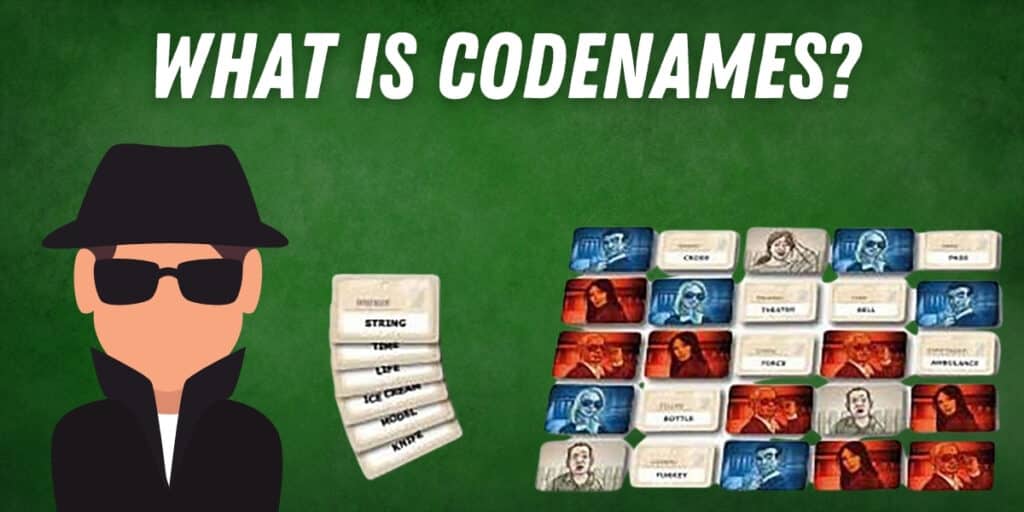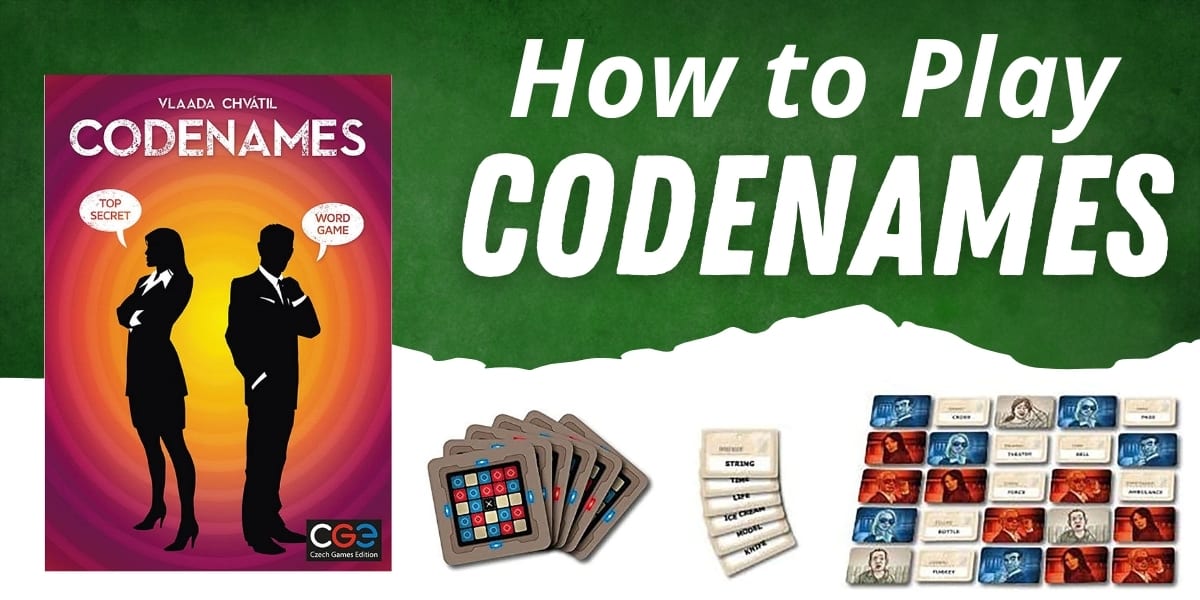If you are looking to add Codenames to your next board game or card game night, then you have come to the right place! We’ll be outlining the Codenames rules and strategies you need to know in order to ensure your team wins.
Like many card games, Codenames can seem a little confusing and complicated at first. That’s why knowing the rules and strategies beforehand can be so beneficial. So, let’s get right down to it and take a more in-depth look at how to play Codenames.
How to Play Codenames
What is Codenames?

Codenames is a wordplay card game with a spy/ thriller theme to it! It was released in 2015 and quickly became a popular choice for board game nights and parties. Codenames, like Pictionary, is best played with two teams of 2 players.
However, it can be played with larger teams as well. Players take on the role of rival spy networks who need to contact their team’s secret agents. One person in your team will be the Spymaster while the others will be operatives.
If you have always wanted to live out your spy movie fantasy through a game then Codenames is a great choice. Let’s look at what you need in order to play.
What You’ll Need
If you want to give Codenames a try then you’ll need a card set. Codenames actually has quite a number of editions and just like Monopoly this includes sets that are based on popular franchises like The Simpsons or Marvel.
There are also versions that tweak the traditional Codenames rules as well. However, if you are playing for the first time we recommend sticking to the original game. The product below shows you exactly what to look out for.
When you open the box you might be surprised by just how many cards there are. But don’t panic you won’t be using them all. And knowing what each component does is easier than you might think. Especially when you use our guide to help you.
Keycards
Keycards are the most important part of Codenames. These cards are essentially maps that show which codename cards belong to each team. The keycards are laid out in 5 by 5 grids.
Squares that are blue show blue agents, squares that red show red agents, blank squares are bystanders, and finally the black square is the assassin.
Keycards will have either a red or blue light on them around the border. A red light means the red team goes first and vice-versa for the blue. However, the team that goes first will have one extra agent that they’ll need to find.
Both spymasters will need to agree on which key card to use as well. And it can’t be shown to the other members of each team.
Codename Cards
Before the game begins the Spymasters should shuffle all the codename cards. There are usually around 200 of these cards in the basic Codenames set. They’ll then take 25 cards at random and place them in a 5 by 5 grid on a flat surface.
Codename cards will have a word written on the top and these could be anything from the name of an animal, types of vehicles, body parts, or just random objects. Once laid out the chosen Keycard will show which are agents, which are bystanders, and who the assassin is.
We’ll talk more about what each of these characters does in the gameplay section below. But before we move on to that we have one last group of cards to talk about.
Identity Cards
Identity cards are used when your teammate who is the operative touches a card. If the card is one of your agents then an identity card will be placed over it. Identity cards are red and blue for each team respectively.
There are also identity cards for the bystanders and the assassin. So, now you know all about the cards let’s look at the gameplay.
Codenames Rules and Gameplay

The Aim of The Game
The aim of Codenames is to be the first team to uncover all your agents on the field. This might sound simple enough since the Spymaster for each team will know where your team’s agents are.
But remember Codenames is a wordplay game. Your Spymaster can only give you a one word hint and normally this hint could apply to many different cards. There is also a risk vs reward balance in the game as well.
And sometimes passing on your turn could be the wisest move of all. Let’s take a more in-depth look at how to play Codenames together.
Setting Up Codenames
The first thing to do under regular Codenames rules is to choose your teams. Codenames is a little different from most card games as the two teammates sit opposite each other, not next to each other.
The two Spymasters should be on one side and the two operatives should be on the other. The Spymasters should then shuffle the codename cards and place 25 out in a 5 by 5 grid. They will then decide on which keycard to use.
Remember the keycard’s border will decide which team goes first. Once all this is done you are ready to begin playing.
Playing Codenames
When an operative begins their turn their Spymaster will give them a single word and number. The word should be a clue to cards that are your team’s agents and the number will relate to how many cards this clue applies to.
For example, if you say “animal” and “two” then cards marked with “horse” and “farm” could be the cards you are hinting towards. You can also say zero or unlimited as your number. This might sound like a clever strategy at first.
As it will give your teammate unlimited guesses, however, it doesn’t clue them in to how many cards they should be looking for. It also increases the odds of them hitting an incorrect card. If you do say a number then your teammate must touch the number of cards requested.
They can even add one extra card to their requested total. Or if they are unsure what to touch and want to play it safe they can pass on their turn. That is generally how turns work in Codenames but what happens when the operative touches a card?
Every time an opponent touches a codename card the Spymaster should check the keycard and place the corresponding identity card over the codename. Let’s say it’s the red team, if your operative finds one of your agents you place a red identity card over the codename card.
If they hit a blue agent then you place a blue identity card over it. This will also help the other team move closer to the finish so you really want to avoid this happening. Finding the other team’s agent will also end your turn and move play to the other team.
Hitting a bystander means your current turn ends as well and that play moves to the other team.
But what each team really wants to avoid is touching the assassin card. If you hit the assassin card during your turn then you lose.
It’s unlikely but possible for a team to lose on their very first turn in Codenames! But this is part of the reason the game can be so thrilling. Winning the game is done when all your agents have been found. You don’t have to find them yourself, as your opponent could end up doing it for you.
The Timer Rule

A mini hourglass is included with a Codenames game set. However, it’s up to the players to decide whether they want to use it or not. Under standard Codenames rules, you don’t have to; however, if you want to ensure teams don’t spend too long choosing cards it could be useful.
Codenames – Live Your Spy Fantasy
Codenames is a very unique wordplay game. Teams will need to think carefully at every stage of play. Do you keep trying for cards and risk the assassin or play things safe?
It’s one of the only games where you can lose on the opening turn or win because your opponent chooses your cards for you. It’s an excellent party game, but also sure to please fans of more strategic board games as well. Now that you know all the codenames rules, go ahead and start playing!


